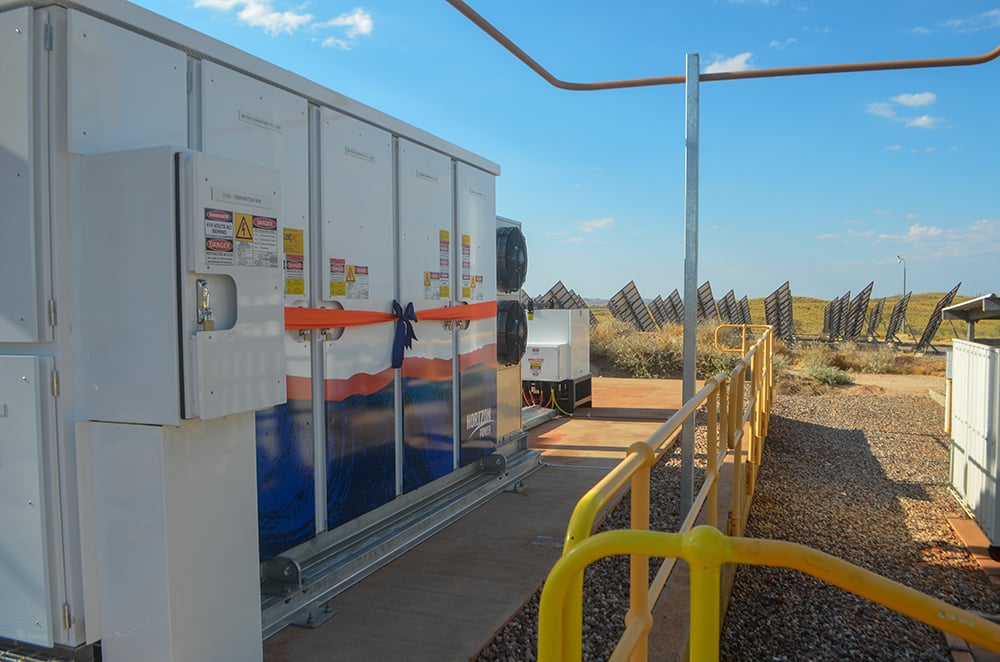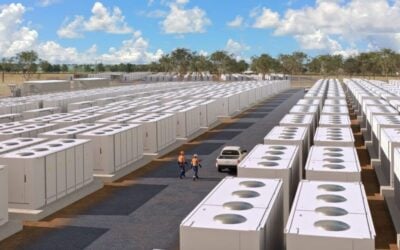
An Australian Renewable Energy Agency (ARENA) programme to put AU$120 million (US$78.17 million) towards community battery storage received applications for more than ten times that amount.
Representing the first round of a new scheme called the Community Batteries Funding Program, ARENA opened up for applications for projects between 50kW to 500kW nameplate output, offering up to AU$20 million per successful applicant.
Enjoy 12 months of exclusive analysis
- Regular insight and analysis of the industry’s biggest developments
- In-depth interviews with the industry’s leading figures
- Annual digital subscription to the PV Tech Power journal
- Discounts on Solar Media’s portfolio of events, in-person and virtual
As reported by Energy-Storage.news as Round 1 opened in April, proposals must include at least five battery storage systems each, with systems that share a grid connection counted as one project. The programme is being paid for with money allocated from the federal government’s Household Solar Budget.
In total, AU$171 million from a total pot of AU$200 million in the Household Solar Budget will be contributed towards the cost of projects, aiming to result in the deployment of at least 342 battery installations.
The idea is that kickstarting community battery projects across Australia will “provide valuable knowledge that can be shared across Australia to fast track the implementation of these local batteries,” ARENA CEO Darren Miller said.
Community batteries are battery energy storage system (BESS) resources connected to the electricity network at distribution level, and the idea is that it helps communities share the benefits of locally deployed rooftop solar PV while easing congestion on their local grid.
It also means that people who live in rented or shared accommodation, or who are otherwise unable to buy or lease their own PV and/or battery storage, can also benefit from the technologies.
‘Overwhelming’ response
ARENA said on Friday (3 November) that the response it received had been “overwhelming,” with 140 eligible applications received. The agency has now shortlisted 31 proposals, with applicants invited to make a full application before the submissions window closes in March next year.
Value of those 140 grant requests was AU$1.3 billion and the total investment cost for those projects would be AU$3.5 billion.
The first round is being split into two streams of projects: the first, Stream A, is for community battery projects to be deployed in front-of-the-meter (FTM) and carried out or owned by distribution network service providers (DNSPs). Stream B is for non-DNSP entities deploying storage behind-the-meter (BTM) on distribution networks.
Of the 31 shortlisted proposals, 14 are Stream A projects for which AU$93 million has been requested, 17 are Stream B projects for which AU$138 million has been requested. Total value of those shortlisted projects is AU$530 million.
The process will likely be highly competitive, as each stream has AU$60 million to disburse in the first round.
The programme marks ongoing interest in developing and deploying community batteries in Australia, with the government Department of Climate Change, Energy, the Environment and Water (DCCEEW) separately also delivering 58 community battery installs across the country, with some already commissioned.
As regular readers of Energy-Storage.news will likely be aware, there are also programmes by Australian state governments to promote and evaluate the role of community-level energy storage. That includes a programme in Victoria to assess the multi-use benefits of such batteries, and in Queensland, where AU$10 million funding is being put towards 35 installations in the city of Ipswich.
In Western Australia meanwhile, a five-year programme to assess the benefits and use of community BESS concluded favourably in 2021, leading the state government to deploy nine systems of around half a megawatt each in rural parts of Western Australia through a scheme called Energy Storage in Regional Towns. One of those systems, in a town called Marble Bar, is pictured above.
However, while the benefits are numerous and varied, the business case for community batteries is a tricky one to pencil out and could require changes in network tariff charges, experts from the Australian National University wrote in an article last year for our quarterly journal PV Tech Power (Vol. 29).
ANU’s team, which has carried out extensive techno-socioeconomic modelling of shared energy storage at community level, also said it preferred the term “neighbourhood batteries” to the “community” nomenclature. This is because the latter implies a level of community involvement, which is the case in some, but not all, proposed or piloted models in Australia.






